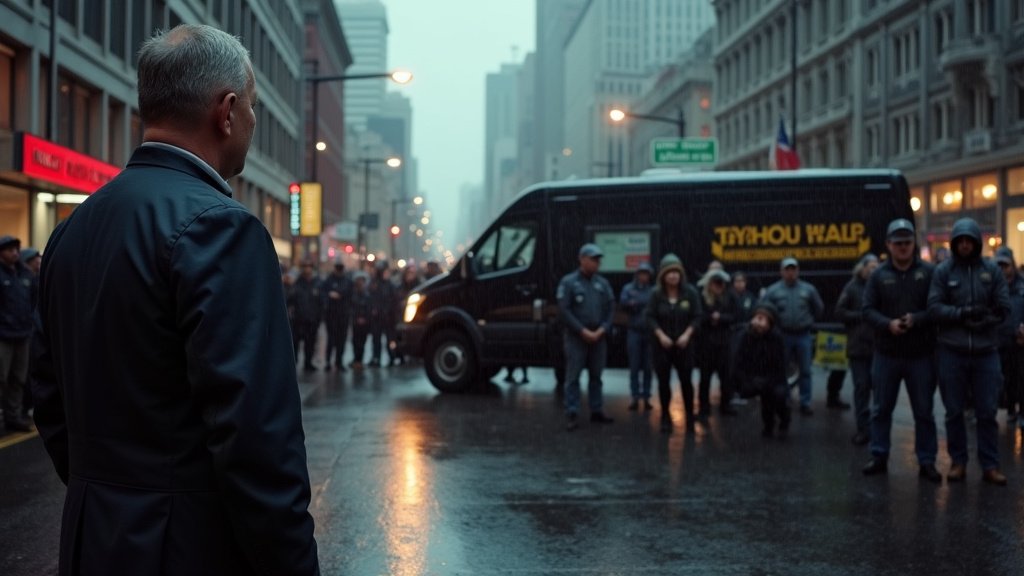Portland, Oregon – A simmering conflict between federal immigration authorities and the state of Oregon’s staunch sanctuary policies appears to be reaching a critical juncture. At the heart of the tension is a widely held belief among local activists and legal professionals that their concerted efforts are directly contributing to a noticeable reduction in Immigration and Customs Enforcement (ICE) arrests within the defiant sanctuary state. This assertion has drawn sharp criticism from Washington D.C., notably from Tom Homan, who served as the Trump administration’s border czar, indicating a potential escalation of federal interest.
Oregon’s Unyielding Sanctuary Stance
Oregon has long cemented its reputation as a defiant sanctuary state, a designation that signifies its firm commitment to limiting cooperation between local law enforcement and federal immigration agencies. This state-level policy, one of the oldest and most comprehensive in the nation, effectively creates a protective layer for undocumented immigrants, restricting the ability of local police to inquire about immigration status or to detain individuals solely for ICE. This political posture sets a distinct tone, fostering an environment where resistance to federal immigration enforcement is not just tolerated but, in many ways, encoded into the very fabric of the state’s governance. It is this foundational defiance that forms the backdrop for the perceived success of local efforts to reduce ICE arrests, creating a direct philosophical and practical challenge to federal authority within the Pacific Northwest.
The Groundswell of Local Resistance
In Portland, the vibrant heart of Oregon’s metropolitan area, this sanctuary status is amplified by the proactive engagement of its citizenry and legal community. Protesters and immigration lawyers are at the forefront of this movement, genuinely believing their actions are making a tangible difference in the frequency of ICE arrests. Their strategies are multifaceted, often involving rapid response networks designed to mobilize quickly when ICE agents are sighted, providing immediate support and legal counsel to those targeted. These grassroots efforts often involve direct action, such as blocking ICE vehicles or forming human chains to prevent arrests, drawing significant media attention and public support. The visibility of these actions aims to deter ICE operations, making them more logistically challenging and publicly scrutinized.
Immigration lawyers play an equally critical, albeit distinct, role. They are not merely responding to arrests but are actively working to prevent them by empowering immigrant communities with knowledge of their rights. Through workshops, legal clinics, and rapid deployment to arrest scenes, these legal professionals ensure that individuals know they are not obligated to open their doors to ICE without a warrant, nor are they required to answer questions without legal representation. They challenge detentions in court, seek stays of deportation, and provide the legal backbone for the community’s resistance. This synergistic combination of direct action by protesters and expert legal defense by lawyers forms a formidable local barrier, challenging the traditional operational flow of federal immigration enforcement and underpinning the belief that their collective work contributes to a reduction in arrests.
Federal Retaliation and the Border Czar’s Warning
This robust local resistance has not gone unnoticed by federal authorities. Tom Homan, the former acting director of ICE and a key architect of the Trump administration’s hardline immigration policies, has openly expressed frustration with the situation in Portland and, by extension, Oregon. Homan, famously known as the border czar during his tenure, views sanctuary policies as an impediment to national security and immigration law enforcement. His public statements reflect a growing impatience with what he perceives as deliberate obstruction by local jurisdictions.
In a clear signal of escalating federal intent, Homan has indicated he plans to visit Portland. Such a high-profile visit from a figure of his stature would not be merely symbolic; it would underscore the federal government’s heightened scrutiny of the city and state. His visit could presage increased enforcement actions, more aggressive tactics from ICE, or even direct federal intervention aimed at undermining Oregon’s sanctuary status. The planned visit suggests that Washington is preparing to challenge the status quo, potentially initiating a new phase in the ongoing standoff between local defiance and federal mandates. This development casts a long shadow over the current landscape of immigration enforcement, promising more intense federal focus on a city that has become a symbol of sanctuary defiance.
What Comes Next?
The unfolding situation in Oregon encapsulates a broader national debate concerning federal immigration authority versus state and local autonomy. The belief among Portland’s protesters and immigration lawyers that they are effectively curbing ICE arrests is now being met with direct federal frustration, culminating in a planned visit from a prominent former federal official. This convergence of local empowerment and federal pressure signals a critical juncture in the ongoing News cycle around immigration. As Portland braces for this impending federal attention, the steadfastness of its sanctuary policies and the determination of its activist and legal communities will undoubtedly be put to the ultimate test.




